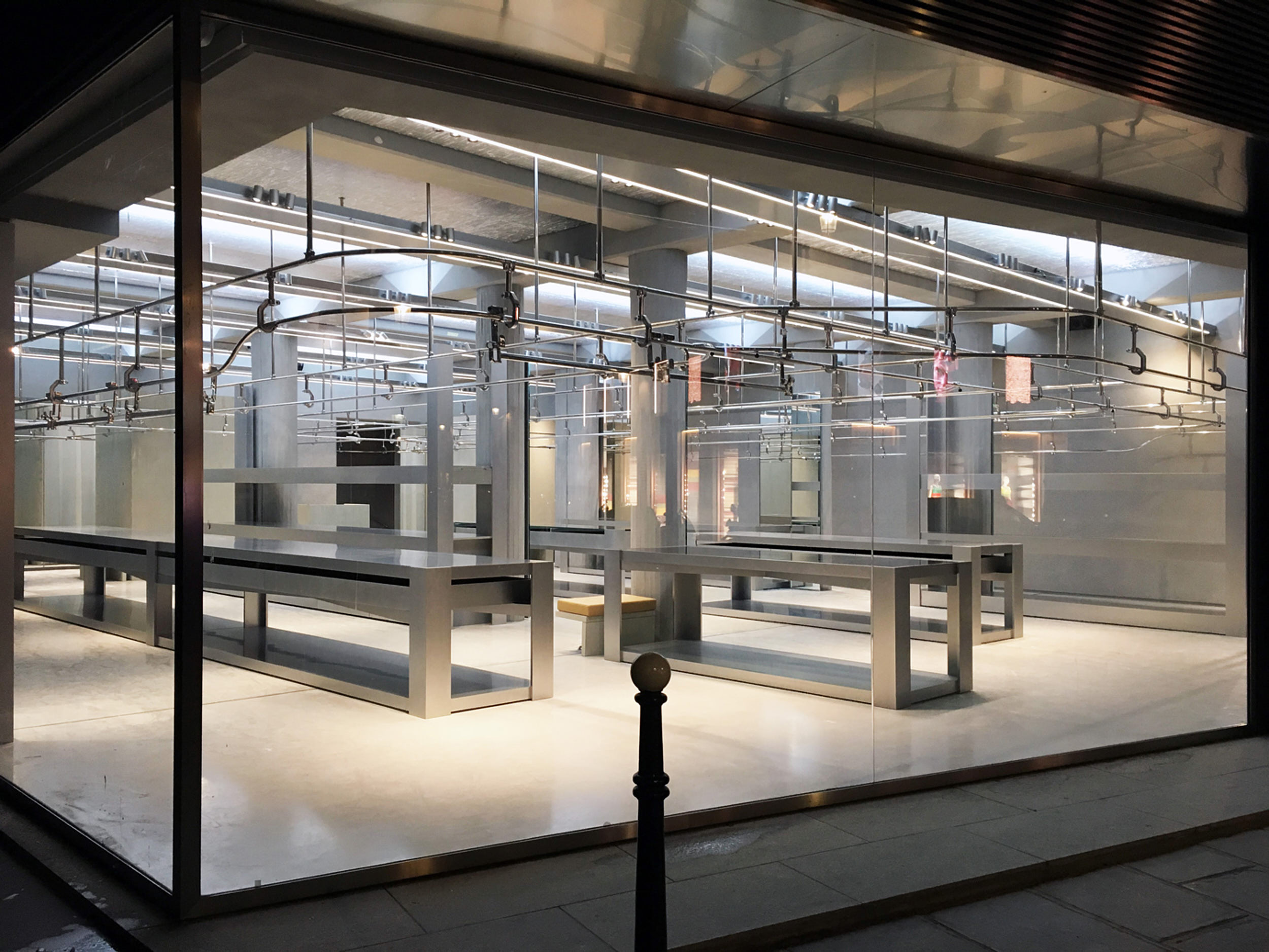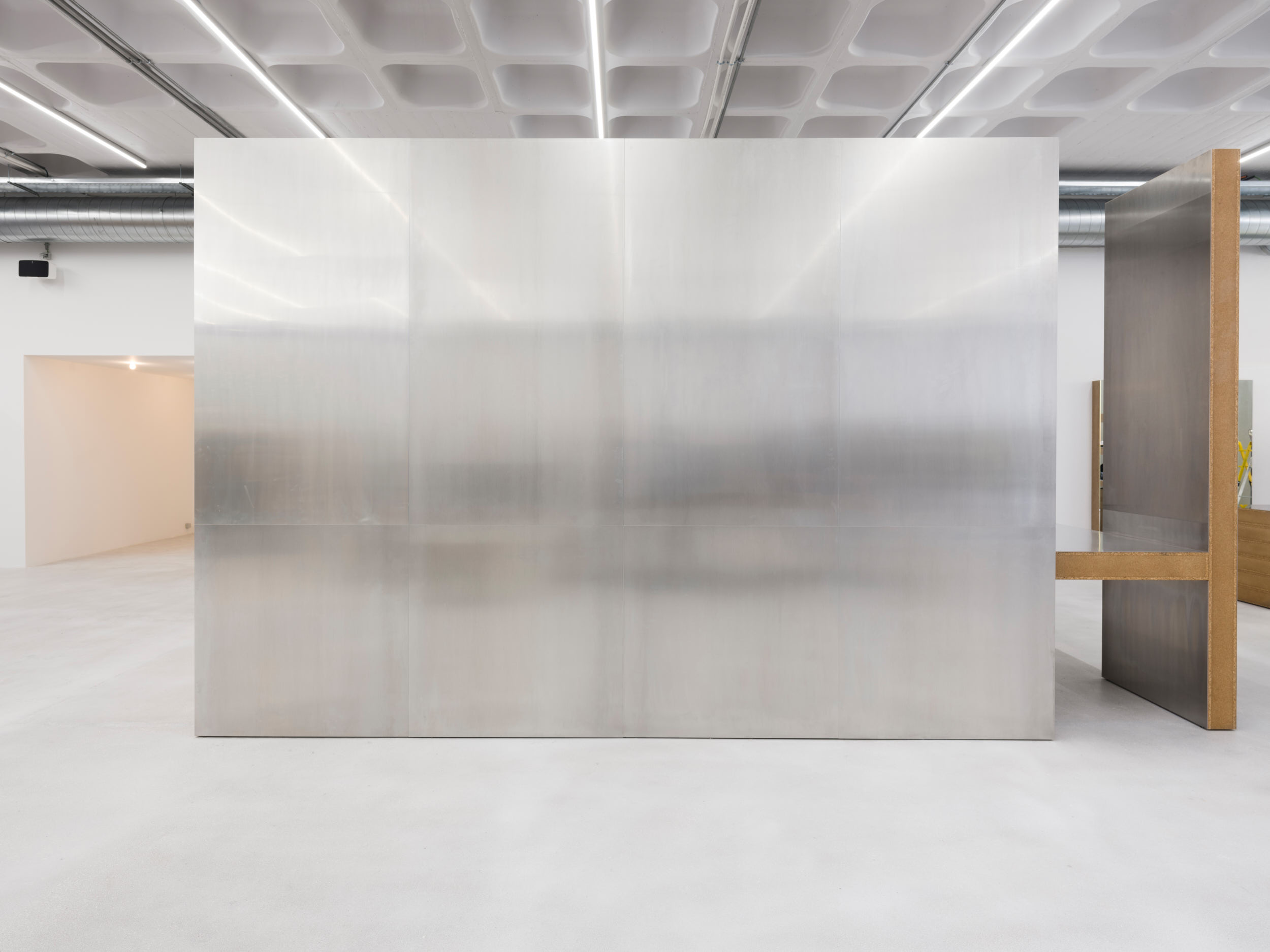Q+A with Gonzalez Haase: On Their Vision and Recent Project TEM-PLATE
Gonzalez Haase AAS, Berlin-based studio founded by scenographer Pierre Jorge Gonzalez and architect Judith Haase stands for Atelier Architecture and Scenography. The studio has been designing distinctive projects by combining elements of art, cinema and lighting into restaurants, artwork installations, luxury retail interiors, workspace and residential extensions. Founded in 1999, the duo has taken an interdisciplinary approach to the next level, putting their trademark signature into each project.
Every design tells a story that exudes playful, colourful and delicately balanced narrative. Gonzalez Haase are experts at combining the interaction of lighting and architecture with rich materials of exposed concrete, timber and reflective surfaces. At the core of their values is the purpose to work with materials that are inspiring and not too loud, but open up possibilities so that the people can experience something different every day.
Balenciaga, Paris — Images courtesy Gonzalez Haase AAS
Their most recent work is the new luxury store TEM-PLATE in Lisbon. Located in the Marvila district, the new luxury omnichannel concept store aims to transform the international fashion retail landscape by offering a curated product selection of high-end designer clothing, accessories and design objects. The minimalist retail space, boasts a futurist art gallery feel - think all shiny materials for separation elements, white walls and concrete floors meeting under the original coffer ceiling.
We recently sat down with the founders to talk about their story, vision, inspiration, philosophy and recent work, Tem-Plate.
Tem-Plate, Lisbon — Images by Thomas Meyer - Ostkreuz
NR: Where did you two meet and how did Gonzalez Haase come about?
GH: We have first met in New York, both working for Robert Wilson foundation development. Judith had been working with Wilson every summer for already ten years, and I joined the program later. From there, Wilson asked us to stay in New York to accelerate the design development of the entire building and integrate his ideas in partnering with Richard Gluckman that was the architect developing prominent galleries at this time in Chelsea. After a time working on this program, we wanted to move back to Europe and establish our own design studio in Berlin along with some friends around the art scene. We then started doing art spaces like galleries, what became our specialty.
Balenciaga, Paris — Images courtesy Gonzalez Haase AAS
NR: Why did you decide to work together?
GH: It was a good match in New York. Judith has an architectural background, and I’m coming from a museum and stage design background with lighting design experience. We rapidly had friends from the art scene asking us to work on projects together, and this was the starting point.
NR: What are you trying to put into the world with Gonzalez Haase?
GH: We try to remove things from the world instead of adding more to it. In our projects, we try to reduce the interventions as much as possible and acceptable by our clients. Building less while emphasizing more on the lighting experience makes sense.
Slam Jam x Nike, Florence — Images by Pietro Savorelli
NR: How did you approach the project of Tem-Plate store? What was your main philosophy/objective?
GZ: Tem-Plate founders came to us with this vast open space, a warehouse off the center city of Lisbon, and they have been incredibly open to our ideas. The project is somehow about fragmented spaces into a warehouse with subtle but brutal lighting.
Tem-Plate, Lisbon — Images by Thomas Meyer - Ostkreuz
NR: Where did you gather the inspiration for this project?
GH: We are not so much in the idea of inspiration, on references and all these stories that are rarely interesting and serve only a form of bavardage for nothing. We try to go straight to the point: existing space, budget, needs from our partners, and design focused on necessity.
NR: Did you come across any challenges while designing the space?
GH: We had the best partners one needs. The difficulty was to fit a strictly limited budget to implement all technical elements for the air, security, and work with the local norms. We had our partner Duarte Caldas that was working with us a long time ago and today established his own practice and is doing beautiful work. He was helpful and patient.
NR: How was it to work with the original space of the building? How did you approach it, and how did you combine the “old” with the “new”?
GH: It's hard to dream of a better space. On the flipside, such warehouse building is hard to convert. But our strategy was to reveal the architectonic from the building more than adding decorative layers. Our starting point is always about removing what is not part of the structure's bones, which are preserved as an essential construction element.
NR: You designed a Balenciaga store in Paris, Holzweiler store in Oslo and now Tem-Plate in Lisbon. When designing a store, do you take into account the geographical and cultural aspect of the space?
GH: Strangely, it is more the other way around: many times the marketing part of our partners will ask us to bring Berlin into their own culture. But there again we shouldn't be confused about what this means. We, unfortunately, don't design a cultural center or social housing. When one designs a chair, the question is more about the culture of the designer than the recipient. We believe that the interest in our design stands there, bringing our own culture, at least for those projects you just mentioned.
NR: How different is it to design a luxury retail store from other spaces?
GH: Before to do so much in the fashion industry, we were working mainly for the art scene. We are bringing this culture of the space into fashion. Nothing is really new, but the fact that we have been developing many galleries in the young art scene at the start of the new millennium with very low - for not to say no budget - has made us working around low-build strategy. Artificial lighting has then come to be the natural element unifying the whole raw space. We still work with this approach when possible, like we did with Tem-Plate.
Galerie Berinson, Berlin — Images by Thomas Meyer Ostkreuz
NR: Since fashion has a fast cycle of life, how do you create a space that stays "timeless" and immune to the fast-changing process of this industry?
GH: This is the point. A fashion store is rarely surviving the 7-year cycle average. So we don't make up complicated or useless expensive details like the luxury has been used to do. We use affordable, simple materials that are not made to be finished. It's the strategy of showing what it is, the reality of the construction, the durability. It's not fake, it's affordable, and is no indecent investment for such a short time.
Then, fashion collections are updated two times a year, and we think it is necessary, as for an art gallery, to set the space itself to become the frame, the display in which to show the best of the artwork: the goods.
NR: What is a luxury for you? (in design and also in life)
GH: It is about additional space you usually won't find or the space you generate from cleaning up from unnecessary furniture, walls, and other elements. Luxury is finally only something rare.






















